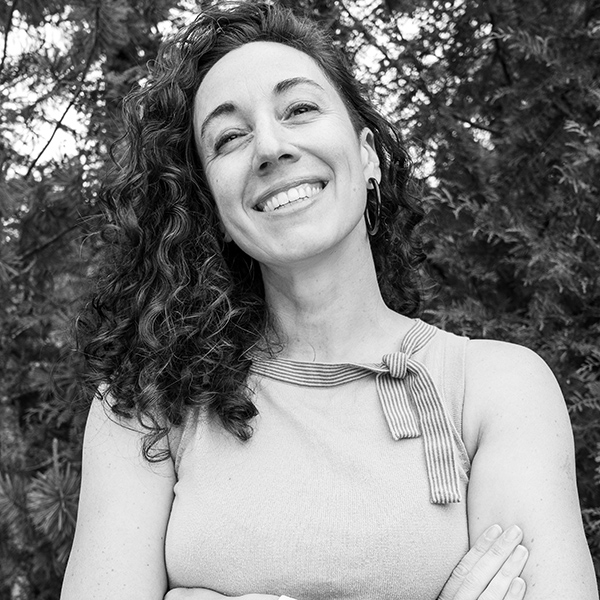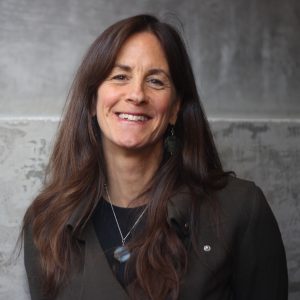Master of Arts in Sustainable Design faculty member and alum Deann Garcia has been busy recording Call to Action, a podcast where she chats with sustainable design faculty and alumni about putting sustainable practices into action.
Some of the episodes so far have featured talks about the social component of sustainability and applying biomimicry principles and processes to our own design practices. Listen now and get acquainted with the amazing people in MCAD’s Sustainable Design community.
Q: You have a background in, and currently practice, graphic design. What does graphic design have to do with sustainability?
I boil it down to 3 streams of sustainability. First, we can choose clients and projects that align with environmental values. Second, we can choose materials and processes that are lower impact (FSC paper, recycled substrates, soy inks, responsible digital deliveries, etc.). But I think the third and most powerful strategy is to use our communication superpowers to craft messages that drive positive behavioral changes in our audiences. Graphic designers spend a lot of time trying to convince people to buy more things in support of our clients’ bottom lines. What if, instead, we devoted that effort to creating edifying messages that inspire people to fight for the change we really need?
Q: What got you interested in sustainable design?
In a word, burnout. I grew tired of spending my days selling junk no one needed. In undergrad, I took a class on sustainability from a professor who talked about how he lived off-grid, insulated his house with hay bales, and used a composting toilet. I was interested, but didn’t see how it connected to my field. Fast forward 8 years, and that creeping feeling that what I was doing didn’t make the world better was starting to sneak in. A fellow MCADian, Shanna Ruyle, with whom I’d worked at Nike, told me about a class she was taking in the program (Fundamentals of Sustainable Design). I went home that day and applied for the MA! In a true full circle, I now teach that very same class!
Q: What are you working on now that you’re excited about?
Since I finished my MA, I’ve been teaching full time. While it’s been very rewarding, I’ve felt the tug to get back to design practice again. I’m backing off on my teaching load in 2022 to concentrate more of my time on my own practice. I’m super excited to have a better balance, getting my hands dirty with design while retaining a part time teaching load at MCAD. In my opinion, there’s nothing that compares to attacking a visual communication problem and finding a clever and beautiful solution, especially when it has the added benefit of closing the gap between our current unsustainable situation and the sustainable future we want to build.
Q: Tell us about Call to Action.
The series started out as a supplement to a course I was building about sustainable graphic design. I wanted to show students how designers were already putting the theories into practice, to make it more relevant. As I worked on the episodes, I realized it was just a ton of fun to put together! And I thought that perhaps more people could benefit from hearing these stories than just my students.
The episodes are 15-20 minutes, and feature interviews with designers of different types. I’ve tried to focus each one of a different framework or process, to really highlight the variety of approaches to implementing sustainability in design.
Q: What are some surprising lessons you’ve learned along the way?
The biggest surprise has been how much I’ve enjoyed it. It’s been great getting to know some of my fellow faculty a bit better too! MCAD has built an incredible network of people from all over the country, with diverse backgrounds and experiences, and different perspectives for putting these ideas we preach into action. I’ve been really inspired to dig deeper into areas that haven’t been my top priority in the past.
Q: A lot of people talk about the barriers to sustainable design, why it can’t happen. What do you tell them?
The barriers are high, but they are not insurmountable. It will take all of us to get over them. Which is why we can’t afford to do nothing! More importantly, we don’t really have a choice but to be sustainable. The choice is whether we do it on our own terms, or if it’s forced upon us as resources become scarcer and supply chains break down. We can choose to make the changes needed now, and hope to avoid the worst effects of climate change. But if we give up and decide it’s just too hard, we’ll end up being forced to adapt to a much more dramatic future transition.
Q: What kinds of clients are you seeking? Are they hard to find?
My ideal clients are small- to medium-sized businesses which have a desire to do more than grow their bottom line. I think that most people start businesses because they want to have an impact in some way. I like to tap into that higher calling, and show them how they are connected to a vast community of other individuals and businesses who have similar goals, whether it’s to provide better experiences for their customers, satisfy the basic needs of people in their communities, or just make people happy. It’s rarely about getting rich. These potential clients are everywhere! But we do have to work pretty hard to show them the value of optimistically embracing sustainability even when budgets are tight.
Q: What makes you hopeful?
I am hopeful because it feels like we are getting closer every day to building a critical mass of people who are inspired to act. Especially the younger generations entering the workforce today – they aren’t willing to settle for the status quo. But I admit that maintaining optimism is a constant struggle. Sometimes I have to just get outdoors and remind myself of the bigger picture. We’re all parts of this larger ecosystem, which will live on without us. In the end, we’re fighting for our own survival, not the survival of the planet. I’m not sure why, but remembering our own insignificance in geologic time is comforting when I get overwhelmed by the challenge ahead.
Q: What advice do you have for young design professionals that might be interested in sustainability?
Seek out others who hold the same values. Connection with the Movement will sustain you when you’re discouraged. Learn everything you can from others with different perspectives. Keep a Beginner Mindset so that you can absorb everything you can from other people as well as the natural world. I think that’s really all it takes!
Thank you, Deann!
[image source: http://www.deanngarcia.com/ ]

